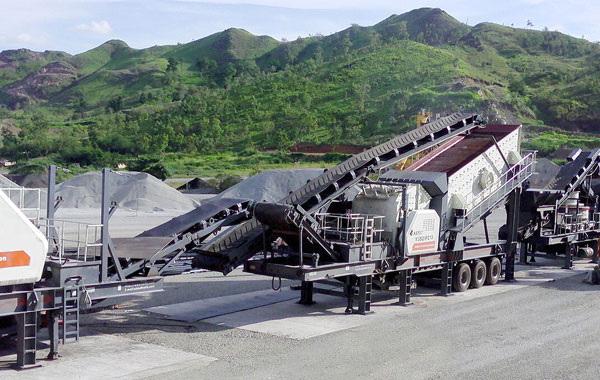A mobile crusher is a versatile piece of machinery used in the mining and construction industries to crush and process a variety of materials, such as rock, ore, and construction waste. These machines are designed to be mobile, meaning they can be easily transported to different sites and quickly set up for use. The components of a mobile crusher include the following key parts:

1. Chassis and Frame
The chassis is the backbone of the mobile crusher, providing the structural support necessary for all other components. It is usually constructed from heavy-duty steel to withstand the stresses of crushing operations and to ensure stability and durability during movement and operation. The frame may include wheels or tracks, enabling the crusher to be easily moved across different terrains.
2. Crushing Unit
The crushing unit is the heart of the mobile crusher. This can vary depending on the type of crusher, which includes:
- Jaw Crusher: Composed of a fixed jaw and a moving jaw, it uses compressive force to break down materials.
- Cone Crusher: Utilizes a rotating cone inside a fixed chamber to crush materials by squeezing and breaking them.
- Impact Crusher: Uses impact force to crush materials by means of a high-speed rotor with hammers or blow bars.
3. Feeder
The feeder is responsible for delivering materials into the crusher. It ensures a consistent flow of material, preventing the crusher from becoming overloaded. Common types of feeders include:
- Vibrating Feeder: Uses vibration to move materials into the crusher.
- Grizzly Feeder: Incorporates a set of bars or grates that pre-screen larger materials and feed smaller materials to the crusher.
4. Conveyor Belts
Conveyor belts are used to transport materials within the mobile crusher system. They carry raw materials from the feeder to the crusher, and then convey the crushed materials to the desired location, such as stockpiles or further processing units. These belts are durable and can withstand the harsh conditions of mining and construction sites.
5. Screening System
Some mobile crushers are equipped with screening systems to separate different sizes of crushed materials. This can be integrated directly into the crusher or operated as a separate unit. The screening system typically includes vibrating screens that sort materials based on size.
6. Power System
Mobile crushers are powered by different sources, including:
- Diesel Engine: Provides the necessary power for the crusher and its components.
- Electric Motor: Some crushers use electric motors, either connected to the grid or powered by a generator.
7. Control System
The control system allows operators to manage and adjust the crusher’s functions. It typically includes a control panel with various buttons and switches for starting, stopping, and adjusting settings, as well as monitoring instruments to track performance and detect issues.
8. Hydraulic System
Hydraulic systems are used to control the movement of the crusher’s components, such as opening and closing the crusher, adjusting settings, and facilitating mobility. This system uses hydraulic fluid under pressure to drive mechanical movements.
9. Dust Suppression System
Dust suppression systems are important for reducing airborne particles created during the crushing process. These systems can include water spray bars or misting systems to keep dust levels down, which is crucial for operator health and safety as well as environmental protection.
10. Safety Features
Safety is paramount in the operation of mobile crushers. These machines are equipped with various safety features, such as emergency stop buttons, protective guards, and automated shut-off mechanisms in case of malfunction or overload.
The components of a mobile crusher work together to perform the task of crushing and processing materials efficiently and safely. Each part plays a critical role in ensuring the machine operates effectively, from the chassis and frame providing support, to the advanced control and safety systems protecting both the machine and its operators. Understanding these components is essential for optimizing the use and maintenance of mobile crushers in various industrial applications.
